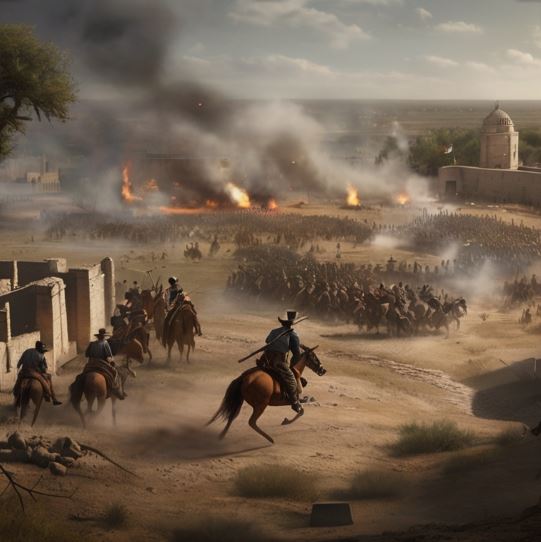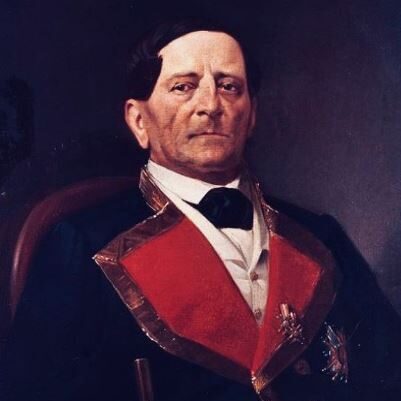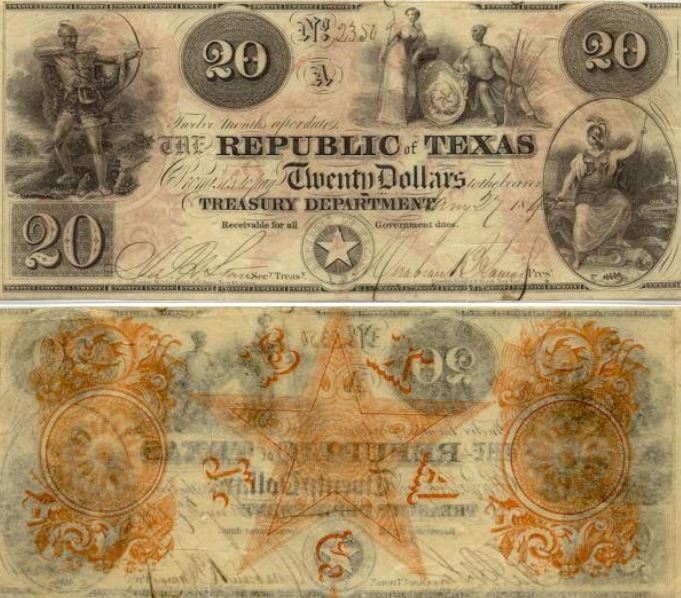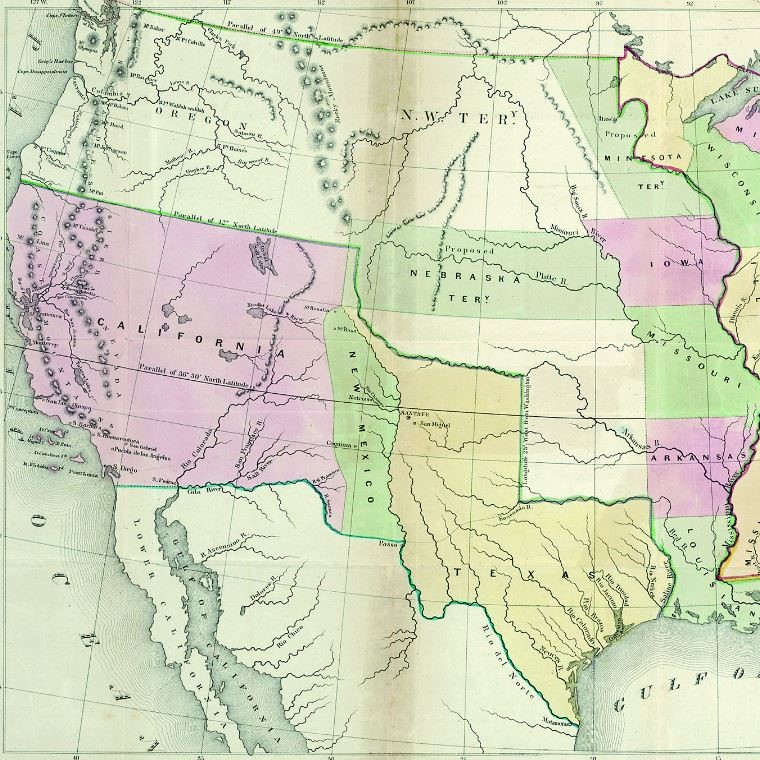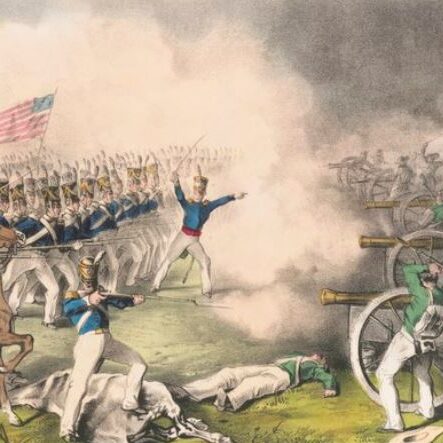The Battle of the Alamo stands as a pivotal moment in Texas history.
The Mexican forces, led by General Santa Anna, won the Battle of the Alamo, defeating Texan defenders including famous figures like Davy Crockett and Jim Bowie. But this battle and defeat would symbolized the struggle for independence and resilience against overwhelming odds.
Located in the heart of San Antonio, the Alamo still holds a sacred place in the collective memory of Texans and Americans alike.
In this article, we explore the layers of myth and reality surrounding this iconic battleground, exploring its significance, key figures, and enduring legacy.
1. The Battle of the Alamo: Background and Context
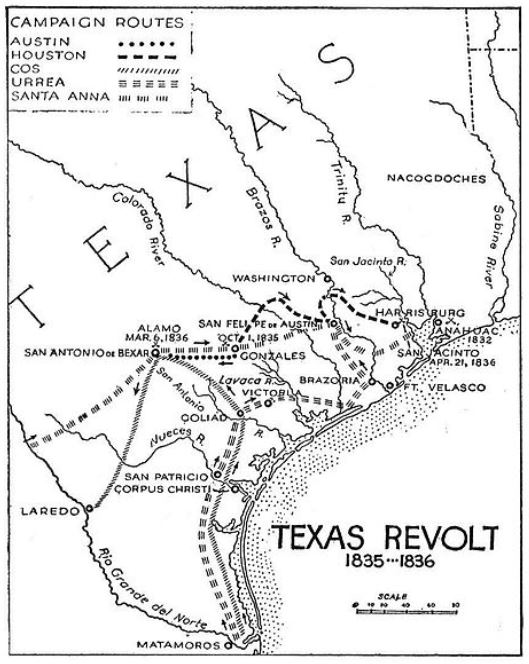
Setting the Stage for Conflict
The early 19th century was a turbulent period in the region that would become modern-day Texas.
As Mexico gained independence from Spain in 1821, it inherited control over the area known as Tejas, which had been sparsely populated under Spanish rule.
However, this power vacuum sparked a influx of settlers from the United States, lured by the promise of cheap, fertile land. These settlers, known as Texians, were independent-minded and accustomed to the rights afforded to U.S. citizens.
They established cotton farms and businesses, fueling economic growth but also sowing seeds of discontent with Mexico’s governing styles.
Texians resisted attempts by Mexican authorities’ to regulate immigration, taxation, slavery, and religion in the territory.
Mexico itself was in the throes of political upheaval. A succession of regime changes and coups left the young nation unstable, with competing visions for its future.

One faction aimed to rein in the autonomy that territories like Tejas had enjoyed. General Antonio López de Santa Anna rose to power in 1833, marking a shift toward centralized rule and a crackdown on dissent.
Alarmed by both Mexico’s volatility and the steady stream of American settlers into Tejas, the Mexican government viewed the territories as a potential foothold for eventual U.S. annexation. Concerns grew that the cultural disparity between the Protestant, slavery-embracing Texians and Catholic, abolitionist Mexico was too wide to bridge.
As tensions escalated, Mexican President Santa Anna began dispatching troops to fortify the region and reassert control.
This tightening grip set the stage for the spark that ignited the flames of the Texas Revolution in 1835 – a revolt that would forever enshrine the Alamo in history as the symbolic line in the sand.
The Alamo – The Fortified Mission
Originally established as a Catholic mission by Spanish colonizers in the late 18th century, the Alamo originally served a religious purpose in the region. Its thick outer walls and fortified design were intended to protect the mission’s residents from hostilities with local Native American tribes.
As Spanish power waned in the early 1800s, the Alamo transitioned from its religious beginnings to take on a military role.
At the time, The Alamo was located on the frontier of the Mexican territory of Tejas. The Alamo’s strategic location and sturdy construction made it an ideal defensive outpost.
In 1835, as the Texas Revolution began, the Alamo quickly became a rebel stronghold and refuge for those seeking independence from Mexico. Its thick, fort-like walls provided sanctuary.
But also made it a target for Santa Anna’s troops once they marched north to brutally quash the uprising. The ensuing 13-day siege would etch the Alamo’s name into history forever – its desperate defense against overwhelming numbers becoming an iconic symbol of courage, sacrifice, and the struggle for liberty.
Key Figures at the Alamo
At the forefront of the Texian defense at the Alamo were notable figures such as:
- William B. Travis – The young commander who played a pivotal role in rallying the Alamo defenders and came to symbolize their unwavering resolve. At just 26 years old, Travis displayed remarkable leadership in preparing the former mission for the Mexican siege. His famous “Victory or Death” letter calling for reinforcements has become a rallying cry for liberty.
- James Bowie – A renowned frontiersman known for the huge knife that bore his name, Bowie brought significant combat experience to the Alamo’s defense. His leadership and skills as a fighter made him a valuable asset, though he fell ill during the siege’s final days. Bowie embodied the rugged spirit of the Texian settlers.
- Davy Crockett – One of the most legendary and mythologized figures at the Alamo. Crockett was a celebrated frontiersman, storyteller, and former congressman who joined the Texian cause after being politically defeated. His iconic coonskin cap and yeoman farmer roots made him a symbol of the common man’s quest for freedom on the frontier.
- Other Notable Defenders:
- Jim Bonham – A skillful scout killed and as believed to have died at one one of the cannons in the interior of the Alamo chapel.
- Almaron Dickinson – One of the last surviving Texian survivors, having died on the last day.
While comprising a diverse array of backgrounds and ages, these key Alamo defenders all became unified in their willingness to sacrifice everything for the cause of Texas independence from Mexico.
2. The Siege of the Alamo
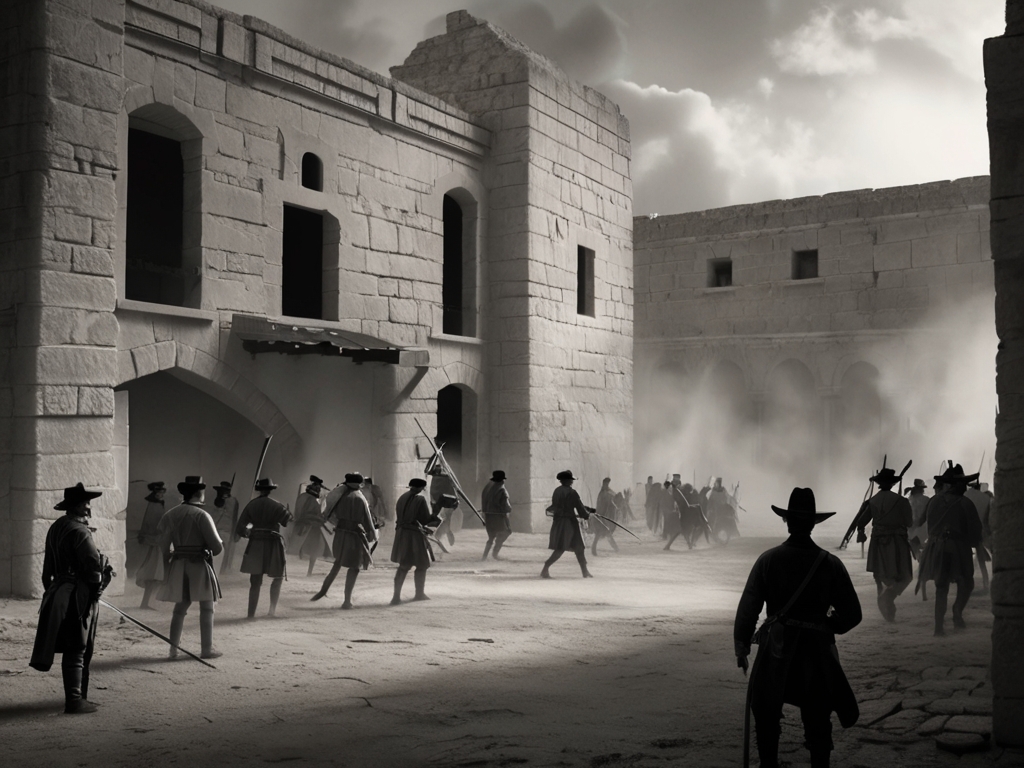
In February 1836, the Mexican army, led by General Antonio López de Santa Anna, descended upon the Alamo, determined to quash the Texian rebellion. What ensued was a grueling 13-day siege, marked by relentless bombardment and fierce resistance.
Texian Defense Strategies
Despite being vastly outnumbered by Santa Anna’s Mexican forces, the roughly 200 Texian defenders of the Alamo employed ingenious defensive tactics to fortify their position and prolong the siege for as long as possible.
Under the leadership of commanders like Travis and Bowie, they shored up the Alamo’s vulnerabilities and prepared for the inevitable attack.
The defenders erected intricate barricades using any materials at hand – stacking cannonballs, erecting cotton bales, and destroying rooms along the outer walls to create strategic firing positions. They understood the value of controlling access points.
Knowing their munitions were limited, the Texians strictly conserved gunpowder for the right moments.
Skilled frontiersmen like Crockett proved invaluable, using carefully-aimed sniper fire to decimate the ranks of Mexican soldiers during attempted breaches of the walls.
An almost celebratory spirit emerged at times, with music and tales swapped while the Texians awaited each new Mexican charge.
The Price of Valor
Despite their ingenuity, the siege inevitably took its toll on the outnumbered and undersupplied defenders.
Ammunition dwindled, fresh water sources failed, and food ran short. Mexican cannon fire relentlessly pounded the Alamo walls.
Each day the casualty counts mounted for the Texians. Promising young lives like William B. Travis’ were cut short. Hardened veterans like Davy Crockett fell bravely defending their ground.
Still, the Texian fighters refused to surrender. Their defiance, until the bitter end, ensured their memory would never be forgotten.
3. The Alamo: Myth vs. Reality
Separating Fact from Fiction
From its earliest days, the Battle of the Alamo has been cloaked in a veil of myth, legend, and heroic folklore.
The extraordinary circumstances of the 13-day siege – a tiny band of defiant Texians holding off an overwhelming Mexican army for nearly two weeks before being overrun – proved irresistible for storytellers and propagandists seeking to shape the narrative.
Over nearly two centuries, the foundational facts have become entwined with tales and distortions and embellishments. Separating the truth from fiction has proven challenging for historians sifting through the layers of mythology surrounding the iconic struggle.
Debunking Common Misconceptions
One prevailing myth surrounding the Alamo is the notion of a universally “glorious last stand” by the Texian defenders to the very last man. While their fierce resistance and bravery is well documented, historical accounts reveal a more complex reality.
The final assault saw the Mexican forces ultimately breach the Alamo’s walls through sheer force after hours of heated fighting. As they poured into the compound, small groups of surviving Texians attempted to regroup and make final stands in different areas like the barracks and the church. However, they were gradually overwhelmed and killed.
Eyewitness testimony confirms that between 5-7 Texian soldiers initially survived the brutal hand-to-hand combat and close-quarters fighting. These were apparently men who had taken refuge and temporarily avoided the slaughter. Though exactly which individuals they were remains uncertain, survivors like Susanna Dickinson reported their existence.
Shockingly, these handful of Texian survivors were not treated as prisoners. On the orders of a furious Santa Anna whose initial directives to take the fort with minimal casualties had been ignored, the few men who initially surrendered or were captured were executed on the spot. This cruel act directly contrasts the “glorious last stand” myth.
The deaths of iconic figures like Davy Crockett and Jim Bowie are also shrouded in conflicting accounts that clash with romanticized legends.
Bowie was severely ill from a bout of “Colon Bolivar Fever” (likely typhoid fever) and confined to his cot in one of the Alamo rooms during the final assault. A few accounts suggest Bowie may have shot himself before Mexican troops reached him, unwilling to be captured alive. There are also claims that Bowie was too weak from illness to even lift his head off the cot before he was killed.
The “mythologized” account has Crockett fighting to the bitter end, wielding his rifle as a club against the Mexican troops until finally being overpowered and killed.
However, there are several contradictory historical accounts that challenge this romanticized version. A former slave who cooked for one of Santa Anna’s officers, claimed to have seen Crockett’s body surrounded by over a dozen Mexican corpses, implying he did fight ferociously.
But other eyewitnesses claimed Crockett was among a small group of Texians captured initially after the Mexican breach, before being executed by Santa Anna’s orders.
By diving into the available primary sources and physical evidence, a more rendered picture emerges of the Alamo’s chaotic final hours – one of incredible violence and Mexican overmatch rather than a simpler, uncomplicated mass martyrdom. Recognizing these nuances does not diminish the Texian defenders’ sacrifice, but provides a more faithful historical record.
Embracing Historical Accuracy
While disproving hallowed legends can seem like historical heresy, most respected scholars agree the true story of the Alamo requires disentangling reality from romanticism.
In many ways, the Alamo has taken on a mythological importance beyond a single military engagement – shaping Texas and American identities, ideals of liberty, and our collective memory.
4. The Legacy of the Battle
Despite their heroic efforts, the Texian defenders ultimately succumbed to the overwhelming force of the Mexican army. The fall of the Alamo marked a tragic chapter in the struggle for Texas independence, but it also galvanized the resolve of those who sought to break free from Mexican rule.
Remembering the Alamo
The battle cry of “Remember the Alamo!” echoed throughout Texas in the wake of the devastating loss, inspiring a newfound determination and resolve among the Texian forces.
News of the massacred garrison struck a profound chord.
In towns across the territory, stories of Travis’ decisive line in the sand, Bowie’s sickbed defiance, and Crockett’s fight to the last quickly took on mythic proportions. What might have been a dispiriting loss transformed into a powerful rallying narrative for the cause of independence.
Ordinary settlers and soldiers alike were emboldened by the legacy of the Alamo’s defenders.
This spirit galvanized Sam Houston’s Texas Army in subsequent clashes like the Battle of San Jacinto, where cries to “Remember the Alamo!” animated the Texian troops. When victory was finally achieved, it was the immortal example set by those who fell at the Alamo that helped sustain the revolution through its darkest hours.
In many ways, the Alamo itself became the first true battle of the Texas Revolutionary War.
Triumph in Defeat
While the Battle of the Alamo ended in defeat for the Texian defenders, its legacy endured long after the smoke cleared. Their courage in the face of adversity and refusal to surrender laid the foundation for victory in the war for independence.
5. The Alamo Today: A Historic Landmark
Today, the Alamo is a designated historic landmark and popular tourist destination.
Efforts to preserve the Alamo’s legacy continue, ensuring that future generations can learn from its history and honor the memory of those who perished there. Through education and commemoration, the spirit of the Alamo lives on, inspiring all who visit its hallowed grounds.
The Battle of the Alamo may have ended over 180 years ago, but its impact reverberates to this day.
Further Reading
If you enjoyed this article, you may be interested to read more about the Mexican-American War or Texas history.

